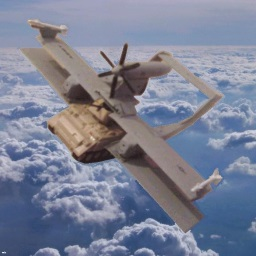Bipartisan is such a weird concept for us living in the rest of the world. We have so many more parties than the two in the US.
- 0 Posts
- 18 Comments
Aww, I thought we were talking about Rimworld
Thank you, will check it out!
I came across the topic of AI security, and been reading up on it, but as I have a weak background in Machine learning, I’m not really able to follow the frontier discourse.
I’d very much appreciate any recommendations as to where to find more foundational level materials for getting into it. Any tips?

 1·1 month ago
1·1 month agoI have a background as a technical specialist and consultant, but not in software. Is the best way to transition through a re-education? Or are there other steps to try out the industry before committing years of school?
Also, how is the career prospects within the current mass IT layoffs?

 8·4 months ago
8·4 months agoAlternate plan (as it would be a shame to waste a dam): Keep the dam, flood the Baltic sea until Kaliningrad is under water?

 6·1 year ago
6·1 year agoSorry to see the weekly thread go. Important topic, but I don’t have enough to contribute beyond lurking and upvoting.

 5·1 year ago
5·1 year agoThis is fascinating, could you perhaps link to some reading on the topic?

 6·1 year ago
6·1 year agoAgreed. On all points.
Moreover, the Tungsten rods are quite dense and thus small, and thus very hard to spot on radar or hit with countermeasures.

 11·1 year ago
11·1 year agoIt’s funny, because tracking big rocks months/years in advance is what we currently do really well, and iirc we update all trajectories of all known objects orbiting earth at least every 11 days, and the main problem is figuring out which is which when they are maneuverable, not where they are going.
There’s currently about 750 000 things being tracked in earth orbit. The total number of asteroids is about twice that, so without upgrades we can still refresh each object every month, and with active space flight I’d guess that would be done much much more often.
Although, doing the math, enough Epstein drives (guesstimating tens) on a smaller asteroid could yield up to 1 m/s² acceleration, meaning an asteroid could traverse the distance from asteroid belt to earth in about a week.

 3·1 year ago
3·1 year agoDaily electricity is right, I’ll edit

 301·1 year ago
301·1 year agoOh, I apologise, I suffered some curse of knowledge there, the answer is time.
A blast is a release of energy over a short time, the whole point of building weapons is to store and handle energy in safe amounts over time.
Global electric energy consumption is about 200 PJ a day, approximately the same as the Tsar Bomba, but there’s no risk for a huge explosion neither when you incinerate trash or turn off the AC.
Because time.
Although we could explode a nuke and propel things ballistically, it turns out it’s a lot easier to use rockets. A rocket, although carrying frightening amounts of fuel and exploding spectacularly when it fires wrong, has several safeguards to not expend all that fuel at once. And also gives the opportunity to correct course along the way.
Now imagine that the same amount of energy has been expended many many many times over the course of the space era, and almost any mass in orbit has serious potential for damage.
For example, the MIR was 130 tons, orbiting at about 7,8 km/s, for a kinetic energy of 4 TJ, and another 235 GJ of potential energy. Totalling about a tenth of Little Boy that levelled Hiroshima.
Edit: Specifying and correcting the global energy consumption.

 432·1 year ago
432·1 year agoA lot of the energy comes from orbital speeds.
The Hypervelocity Rod Bundles project proposed 6,1x0,3 m tungsten rods, weighing about 8200 kg, impacting at about 3000 m/s, meaning about 42 GJ of energy per projectile [wikipedia].
The weakest recorded nuke, the Davy Crocket Tactical Nuclear Weapon, is estimated at about twice that (84 GJ), and the largest, Tsar Bomba, at about 3 000 000x the yield (210 PJ).
Several teams actually
But you could also do a mean time analysis on specific tasks and have it cut off at a standard deviation or two (90-98% of task times covered), and have a checkbox or something for when the user expects longer times.
You could probably even make this adaptive, with a cutoff at 2x the standard time, and updating the median estimate after each run.

 161·1 year ago
161·1 year agoThe square-cube law is also why we don’t have giant spiders, so it’s not all bad.
(a cow sized spider would have legs as thick as matchsticks, and as intuition would suggest, collapse hilariously on itself.)

Go ahead, cry a little, as a treat